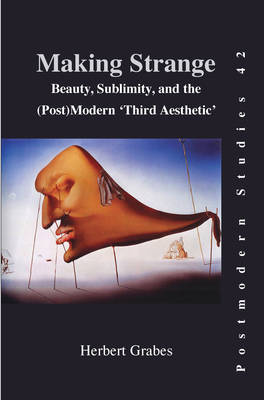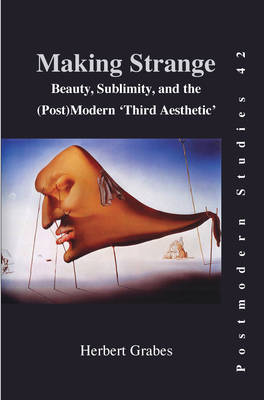
- Afhalen na 1 uur in een winkel met voorraad
- Gratis thuislevering in België vanaf € 30
- Ruim aanbod met 7 miljoen producten
- Afhalen na 1 uur in een winkel met voorraad
- Gratis thuislevering in België vanaf € 30
- Ruim aanbod met 7 miljoen producten
Zoeken
Omschrijving
This compact, indispensable overview answers a vexed question: Why do so many works of modern and postmodern literature and art seem designed to appear 'strange', and how can they still cause pleasure in the beholder? To help overcome the initial barrier caused by this 'strangeness', the general reader is given an initial, non-technical description of the 'aesthetic of the strange' as it is experienced in the reading or viewing process. There follows a broad survey of modern and postmodern trends, illustrating their staggering variety and making plain the manifold methods and strategies adopted by writers and artists to 'make it strange'. The book closes with a systematic summary of the theoretical underpinnings of the 'aesthetic of the strange', focussing on the ways in which it differs from both the earlier 'aesthetic of the beautiful' and the 'aesthetic of the sublime'. It is made amply clear that the strangeness characteristic of modern and postmodern art has ushered in an entirely new, 'third' kind of aesthetic - one that has undergone further transformation over the past two decades. Beyond its usefulness as a practical introduction to the 'aesthetic of the strange', the present study also takes up the most recent, cutting-edge aspects of scholarly debate, while initiates are offered an original approach to the theoretical implications of this seminal phenomenon.
Specificaties
Betrokkenen
- Auteur(s):
- Uitgeverij:
Inhoud
- Aantal bladzijden:
- 204
- Taal:
- Engels
- Reeks:
- Reeksnummer:
- nr. 42
Eigenschappen
- Productcode (EAN):
- 9789042024335
- Verschijningsdatum:
- 1/01/2008
- Uitvoering:
- Paperback
- Formaat:
- Trade paperback (VS)
- Afmetingen:
- 155 mm x 234 mm
- Gewicht:
- 294 g

Alleen bij Standaard Boekhandel
+ 196 punten op je klantenkaart van Standaard Boekhandel
Beoordelingen
We publiceren alleen reviews die voldoen aan de voorwaarden voor reviews. Bekijk onze voorwaarden voor reviews.








